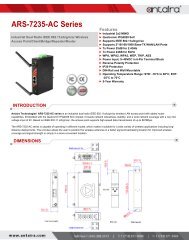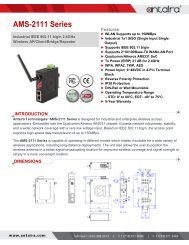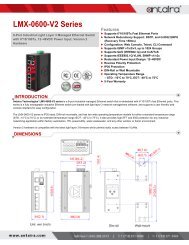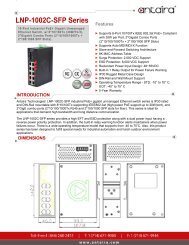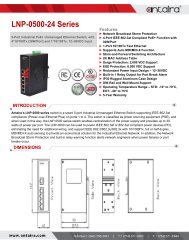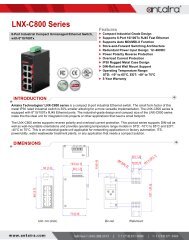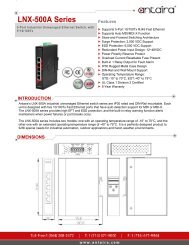IDEM Product CATALOG
IDEM Safety Switches Product Catalog - PCC US Distributor of IDEM
IDEM Safety Switches Product Catalog - PCC US Distributor of IDEM
Create successful ePaper yourself
Turn your PDF publications into a flip-book with our unique Google optimized e-Paper software.
Guard Locking Safety Interlock Switches<br />
FUNCTION GUIDE:<br />
All Guard Locking Switches are intended to prevent an operator accidentally opening a guard door and being exposed to a hazard.<br />
When choosing the correct switch it is necessary to take into account the dimensions and weight of the guard door and to install the switch so as to<br />
avoid applying unnecessary forces to the switch locking mechanism during normal use.<br />
All switches are specified with a holding force value (Fzh), and it is important to select the correct device to withstand the static forces applied during<br />
normal use and dynamic effects caused by bouncing of the guard shall not create an impact reaction force with exceeds the holding force. If the<br />
expected impact reaction forces are higher than the specified holding force for the switch, then design measures must be applied to avoid the force.<br />
Door catches, stops and guides should always be fitted in addition to the safety switch to prevent unnecessary damage to the switch.<br />
When the guard is closed the switch actuator is automatically locked and the switch safety contacts close.<br />
The guard will be held closed and can only be opened after the switch solenoid is energised causing the actuator to unlock.<br />
The operator cannot accidentally open the guard until the hazard is removed. When<br />
the solenoid is energised the safety contacts open and the actuator can be released.<br />
Depending on risk assessment for the application, the solenoid is usually<br />
energised either by:<br />
1. A request push button (for applications with immediate removal of the hazard).<br />
2. A request push button and safety timer (for applications with a run down<br />
hazard after removing the machine power).<br />
3. From a PLC or if necessary a Safety PLC via a machine control command.<br />
RFID & STANDARD VERSIONS with Rear Manual Release Buttons:<br />
KLM-RR<br />
KLP-P2L<br />
KLM-P2L<br />
KL3-SS-RR<br />
KLTM-RFID-RR<br />
KLTM-RFID-RR<br />
All the features and specifications of the standard solenoid locking switches are maintained.<br />
Where the risk assessment for the application permits, a non-latching manual escape release is provided to enable quick release of the switch lock in<br />
case of emergency.<br />
The switch can be mounted such that access to the release button is available from inside the active guard area. Pressing and holding the red button<br />
releases the lock mechanism and opens the lock monitoring safety contacts to allow the guard to be pushed open.<br />
POWER TO LOCK VERSIONS (energise the solenoid to keep the switch locked):<br />
Only suitable for applications where immediate unlocking is required at removal or loss of solenoid power.<br />
Not suitable for machines with a running down time.<br />
KLTM-P2L<br />
KL3-SS-P2L<br />
When the guard is closed the switch<br />
actuator will only lock and allow the<br />
safety contacts to close after the<br />
solenoid is energised.<br />
The guard will be held closed and can<br />
only be opened after the solenoid is deenergised<br />
either by controlled request<br />
(or by power loss).<br />
A latching Stop/Start circuit or a PLC or<br />
Safety PLC machine command usually<br />
energises the solenoid.<br />
SECTION 5<br />
www.idemsafety.com GUARD LOCKING SAFETY INTERLOCK SWITCHES<br />
37








